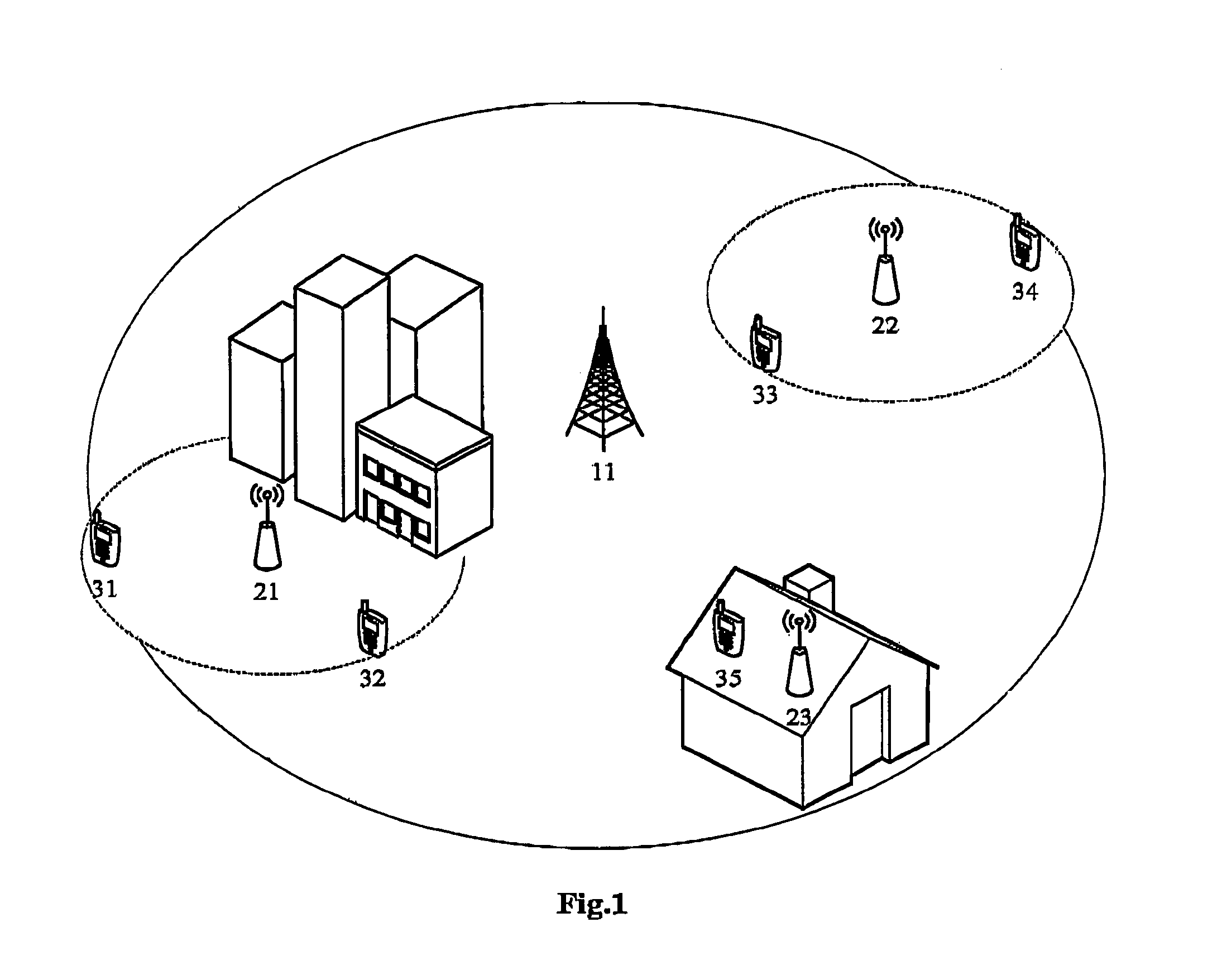Method and device for inter-cell interference coordination
a technology of inter-cell interference and coordination, applied in the field of radio communication technology, can solve the problems of increasing the implementation difficulty of hardware/software, ineffective complete time/frequency orthogonality, and inability to implement network applications with synchronization requirements, and achieve the effect of effective avoidance of inter-cell interferen
- Summary
- Abstract
- Description
- Claims
- Application Information
AI Technical Summary
Benefits of technology
Problems solved by technology
Method used
Image
Examples
Embodiment Construction
[0017]FIG. 2 illustrates a flow chart of a method of coordinating radio resource in a base station of wireless communication network according to an embodiment of the present invention. As shown in FIG. 2, the method comprises three steps S1, S2, S3. The method is applicable to any type of base station, such as Macro base station, Pico base station, Femto base station, relay node.
[0018]First, in step S1, base station determines whether a UE is of interference risk. If the UE is determined to be of interference risk, then step S2 and S3 is performed in turn; and if the UE is determined to be without interference risk, the performing of step S2, S3 is unnecessary.
[0019]In step S2, the base station determines key interference source base station(s) of the UE.
[0020]Then, in the step S3, the base station schedules radio resource in collaboration with the key interference source base station(s), so that the key interference source base station(s) idle(s) the radio resource assigned to the...
PUM
 Login to View More
Login to View More Abstract
Description
Claims
Application Information
 Login to View More
Login to View More - R&D
- Intellectual Property
- Life Sciences
- Materials
- Tech Scout
- Unparalleled Data Quality
- Higher Quality Content
- 60% Fewer Hallucinations
Browse by: Latest US Patents, China's latest patents, Technical Efficacy Thesaurus, Application Domain, Technology Topic, Popular Technical Reports.
© 2025 PatSnap. All rights reserved.Legal|Privacy policy|Modern Slavery Act Transparency Statement|Sitemap|About US| Contact US: help@patsnap.com



